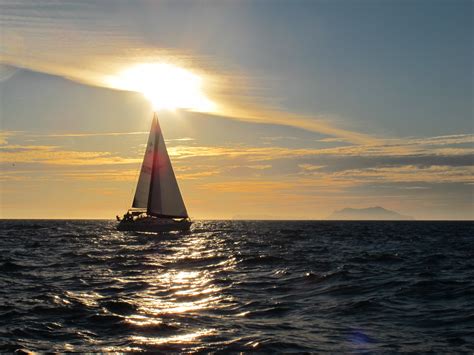Noi, cei de la Sailing Virgins, creăm videoclipuri cu instrucțiuni despre cum să navighezi, care nu sunt șchioape! Alăturați-vă nouă în timp ce călătorim prin Caraibe, Croația, Tahiti și multe altele și arătați-vă frânghiile, la propriu. –- Suntem școala de navigație numărul 1 din lume pentru mileniali – lecții, cursuri, cursuri în Caraibe, Croația și Tahiti. –- În acest episod: Din când în când, poate fi necesar să aduci o barcă alături de nimeni în afară de tine. Considerăm că această metodă cu o singură mână este simplă și eficientă. Pentru o explicație detaliată a acestei metode, vă rugăm să consultați postarea noastră de pe blog la: http://info.sailingvirgins.com/sailing-virgins-blog-dec2017/single-handed-alongside Susține-ne și obține echipament gratuit: https://www. patreon.com/sailingvirgins Aceasta este o metodă avansată numai pentru marinarii experimentați. Dacă o dai peste cap, te poți răni. Ai grijă. Postarea de blog subliniază unele dintre zonele de risc. ––––Cuprins–––– 00:00 Intro 00:28 Instalarea – de ce metodă aveți nevoie pentru a vă asigura liniile de prura și pupa. 02:41 The Approach – găsirea celei mai mici viteze care încă vă oferă viraj. 03:48. Asigurarea – mergeți în marșarier la aproximativ jumătate de lungimea barcii de poziția finală dorită, având barca cu centimetri înainte, asigurați-vă linia pupei, blocați-o, mergeți ușor înainte, asigurați-vă arcul, apoi mergeți înainte și asigurați-vă linia de bow. 05:00 Finisare – nu este chiar acoperită în această demonstrație, deoarece există atât de multe metode diferite aici. Această metodă constă în aducerea navei alături și asigurarea acesteia. Sperăm că veți obține ceva din asta și așteptăm cu nerăbdare comentariile voastre. Skipper James Kell este instructor de iahtmaster la Royal Yachting Association. El conduce Sailing Virgins, o școală de navigație de aventură cu sediul în Caraibe, dedicată îmbunătățirii abilităților de navigație ale oamenilor de 20 și 30 de ani. Consultați https://sailingvirgins.com pentru informații despre cursuri.
source
Cum să andocuri cu o singură mână (Sailing Virgins) Ep.03

50 thoughts on “Cum să andocuri cu o singură mână (Sailing Virgins) Ep.03”
Comments are closed.




Nicely done. Have tried something similar in my power boat – just left it in neutral. Will have to give it a go with her in gear – just have to wait about three months to get back on the water
Outstanding, very helpful. Well done.
Really well done. A lot of practical tips and I like the line setup. May I suggest as a sailor your next knot is the cleat hitch 🙂
As about as good as it gets with the production and instruction. Keep it up! Subscribed:)
What position was the rudder in when you were in gear and off of the boat?
Excelent video! I sail a smaller boat and I dock it very similar to what you've shown. My only concern is leaving the boat with the engine running, I rather prefer to do everything from onboard, spring and bow line, in a similar way to what you've shown for the stern line.
Again, thanks for the great shots and explanations. In my opinion, preparation in advance makes 90% of a successful docking…
Hey gents, unreal videos. Content and editing. Was just wondering what sort of ropes you’re using and what length. Appreciate the teaching style. Cheers
I single hand all the while. Just a couple of points might help: 1 always lead the forward docking line all the way aft to the cockpit so I have two lines ready to take ashore with me. On larger boats the forward line I lead aft is a spring line, cleated aboard midships. 2: Only leave the engine in gear if the bow is going to get blown off the jetty. Wait until you have secured your stern line, in a breast line position is best, then turn the helm toward the dock (tiller would be "away" from the dock) and put the engine in forward gear. This will try to push the stern away from the dock, thus levering the bow back toward the dock, turning on your aft fender. 3: Using your video as our example: If you had a strong wind blowing from the dock it would have pushed you away on your angle of approach. Keep in mind our boats turn from the stern and pivot around our center line, so you can approach the dock (very slowly) as if you were going to t-bone it, straight on and then, as you get close begin your turn. 4: Lastly. If the wind had been blowing strongly from the left of the shot in the video, onto your bow as you were approaching, then come along side the space at the jetty, almost as if you were about to parallel park a car, but lined up with the space, and slowly, using your helm let the bow fall off toward the jetty, then use the power of the wind blowing on the bow and a little "port" helm, in your case, with controlled engine power you can let the boat crab across the water right into the space at the jetty. The whole boat can be made to crab sideways quite easily. I have had quite a few rounds of applause from jetty watchers for that maneuver. It is very satisfying. Single handers should always try and do everything from the cockpit and as you say set up is key. Picking up a mooring buoy, deploying drogues and sea anchors, even throwing the anchor overboard (on smaller boats) are all best done from the cockpit. Just lead the necessary lines aft. Great videos. Love your work. Beautifully shot too!
great video's. Good to see the basics again reminding me of the details on how to do it.
Great video! The drone shots are awesome. I too do this but always take one of my hook poles with me in case of a wind gust mess up my dock plan, sometimes using the second pole from the bow to work the bow to the dock and bumpers before stepping out. Great job.
This will definitely help prepare me to pop my single hand alongside cherry.
These are good videos – well made and, as far as I can see, based on a high level of experience and skill. And great to see some old haunts. One thought – centre cleat would be better for single handed docking, especially when wind not conveniently on the nose.
Another great job…thanks for sharing…
Great work! Most of my friends have their own boat so I'm single handing a lot and we meet up and raft off at anchor. I would like to see another perspective on how you handle rafting off if possible. I really enjoy your videos they're awesome!
Great vid. i decided to watch this has yesterday doing the dock leap to tie off I slipped and went between the boat. Luckily i grabbed the guard rail and pulled my self up with out getting wet. But lesson learned. I love the elephant ears and the loop, much safer thank you.
Nice job!
Whats your thoughts on the mid cleat first method. When we were in the UK with big tides, strong winds fast flows it was the only way we taught our peeps to moor to docks and maintain control. Sail Safe Ant & Cid xx
You guys have my favorite how-to vids. Wished I'd seen you when I was starting out 3 years ago. I still watch to either comfirm my techniques with yours, and in most cases I end up learning more from you guys. Thanks!
Thank you, but I didn't understand why leave it in gear?
It`s easy in calm weather , but try this in strong wind and current !!!
Great job. Just goes to show that, with some general logical knowledge, prior planning, and PATIENT operation under power letting the momentum do the work, otherwise edgy maneuvers can be done quite calmly and confidently. Best thing about this approach, very easy to abort and try again. But…..gotta learn to tie a cleat hitch. Ha. Nice boat. Nice job.
Easy in light wind. Nicely done with the drone! Should have also mentioned propwash. Guess this ship has a left turning prop.
That was Level 1 – Elementary. The dock is empty with no other boats tied to it, the approach is upwind and the prop walk moves the stern to starboard as you reverse the engine, making it easy to step ashore. Now please give us a Level 2 video – Intermediate. You are for some reason forced to approach port side to the dock which makes your stern walk away from the dock when you reverse (that's the situation I have in my home marina). Lastly Level 3 – Advanced. There are already two boats at the dock and you have to tie up in the space between them. There is a brisk following breeze and your prop walk will force your stern away from the dock as you reverse. Now show us how to do it. My own advice would be: don't even try it. Anyway: the drone footage is superb.
Hi Virgins and thanks for the great videos. I felt you could of mentioned the double handed coiled rope throw to capture the cleat on the dock as you are usually not at arms length especially in windy conditions. André from Sydney.
Sailing "virgins"…ties single handed cleat hitch in under 1.45 seconds. haha
Nicely made video, simple, to the point and without the 10min buildup that you often see.
My wife and and have watched most of your 'how to videos' and we agree they're great. We really appreciate how you emphasis setup before execution. We've sailed a bit but we've learned a lot watching your video. Cheers.
the gods of the ‚wuota‘ – ye are! thanks!
Excellent video! Very informative for new sailors. Keep up the hard work!
Why not put a bowline in that bowline and just toss it over the cleat. I would never leave the vessel, your lines look great, but how boat if the cleat gives
Great video, thanks 👌
Easy piezy! Thanks for the video.
What a find! Thanks for the upload, cobber 👍
Great video! The drone shots are awesome. I too do this but always take one of my hook poles with me in case of a wind gust mess up my dock plan, sometimes using the second pole from the bow to work the bow to the dock and bumpers before stepping out. Great job.
I have tried it. It works and I love it. Use it now all the time.
Awesome bruh I'm new to Sailing learning as I go appreciate your videos.
I have a dumb question. Why putting the engine in gear instead of putting it in reverse after you got the first line in? The reverse would make the front go nearer to the shore and easier to knot to.
Well done. I'm single handed too and I once was scared of doing what you did, but now when I'm going stern in, I put a huge fender on the transom, back the boat into the fender, leave it on idle reverse and tie a few lines, kill the engine, and tweak the lines. As you say, preparation and power/momentum management is everything. Great show.
Yes, echo that about the drone, and love the unconventional wisdom.
These videos are incredible. Much gratitude!
I’ve always done this with a midships line
Thank you!
Short and to the point. Thanks
Thanks am a beginner and appreciate the clear advice.
Man, making it look so easy!
Where are your fenders?
VG TY. The drown shots provide an outstanding big picture.
So helpful, thanks!
Many ways to do this, my preferred method solo is to use a mid cleat and get that line on the dock and the boat isn’t going anywhere. Then I grab the bow and stern lines that I prepare much the same as you did. Have to bare in mind not all docks have nice mooring cleats. In France for example they are often aluminium loops so you have to get the rope through them and you can’t drop a line over like you did. Docki into wind is fine if you can but there may be a current so that may be stronger. I do like that this was a short and sharp no BS video though. Andy UK
Why aren't you approaching with the stern against the wind?